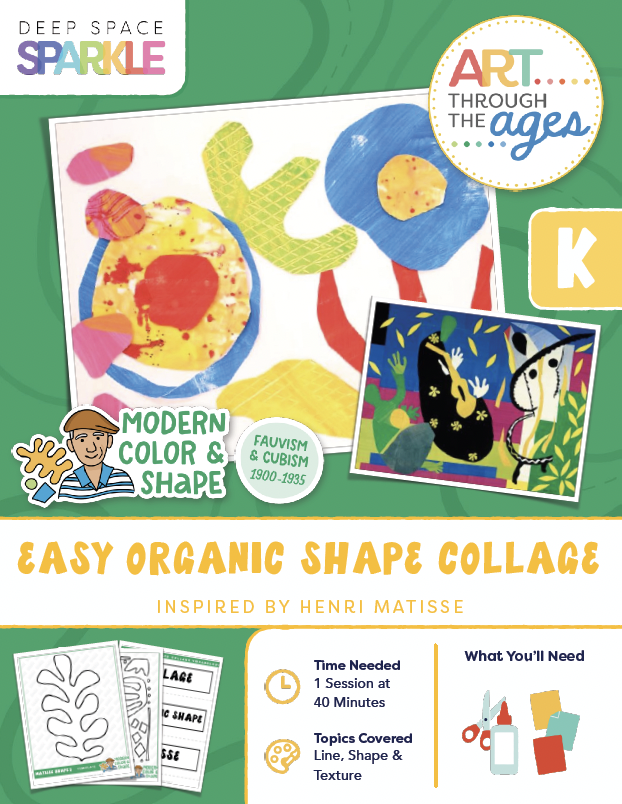
This organic shape collage lesson introduces young learners to Henri Matisse’s artwork in an exciting way. Students will love the process of creating painted paper and then using the paper... Learn More
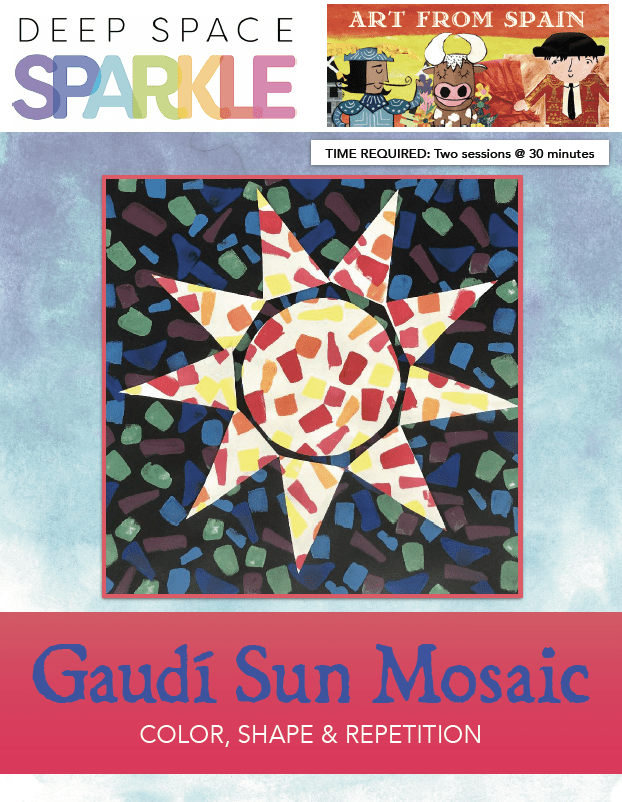
I love the look of mosaics, but the thought of using a million confetti-sized pieces of paper with kinders is a little daunting. This project gives the look of a... Learn More
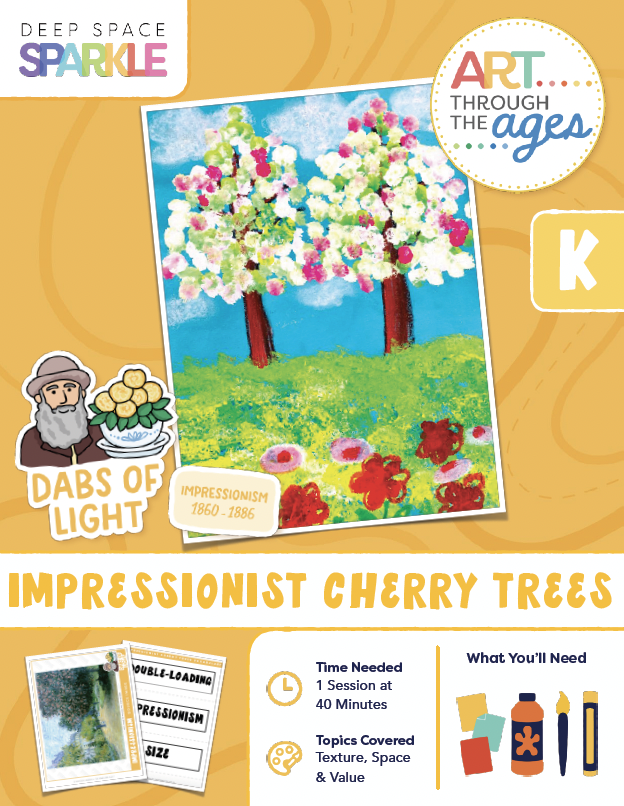
The season of spring is such a joyful time. New baby animals, buds and blossoms on trees and flowers dotting the landscape are all reasons to love spring. This lesson... Learn More
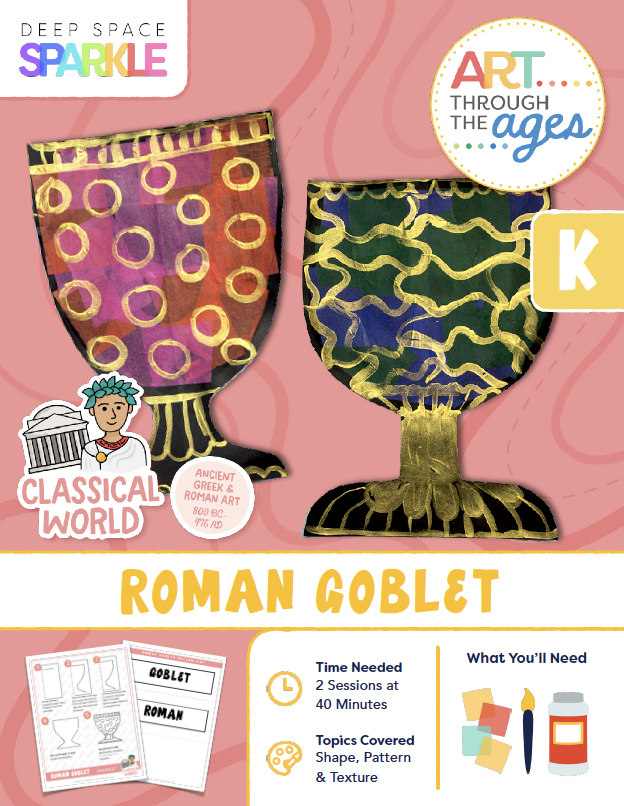
There are always ooos and aahs when a kinder unfolds a paper they have just cut and find that they now have a symmetrical shape. I’m with them because it... Learn More
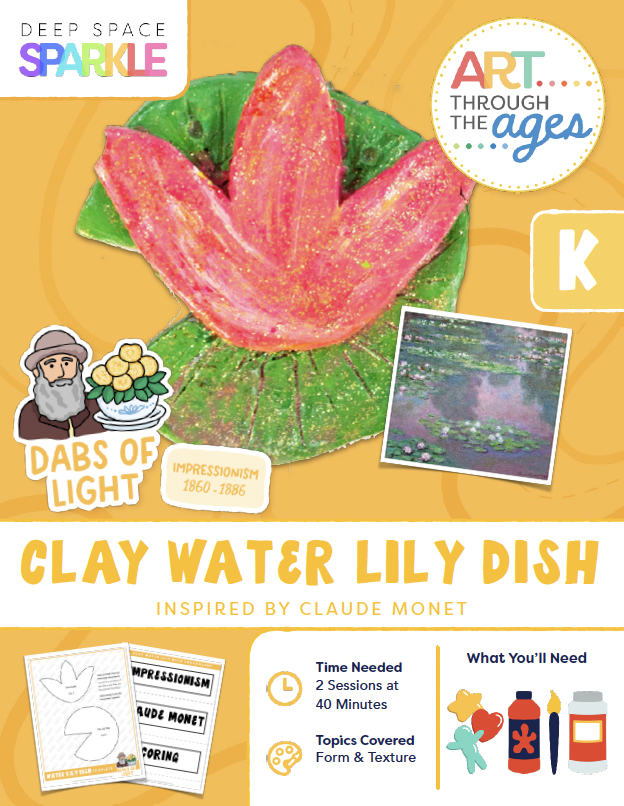
Monet’s water lilies are ethereal and serene. How did Monet create this feeling? With lots of colors and short brush strokes to mimic the colors in his Japanese water garden.... Learn More
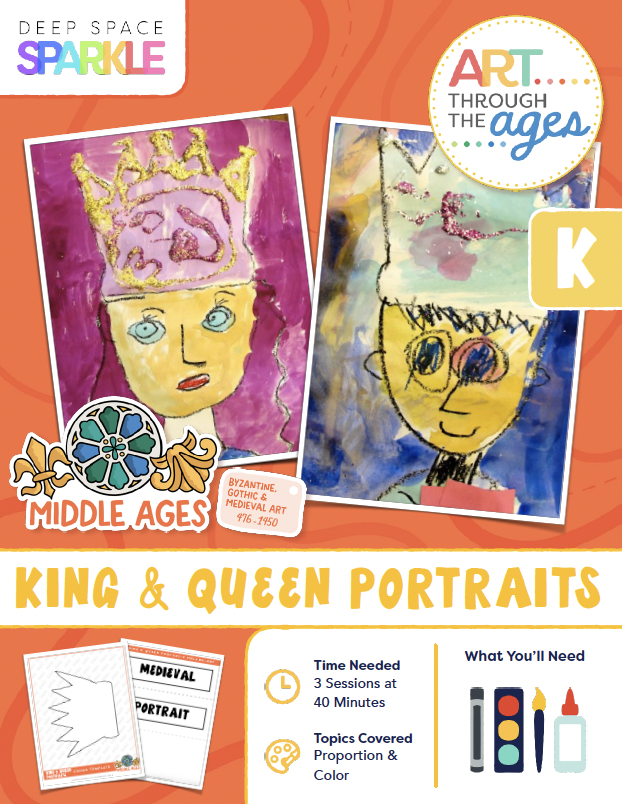
Using a template or a starter when teaching little kids about the process of making portraits helps the child considerably. The child traces the crown near the top of the... Learn More
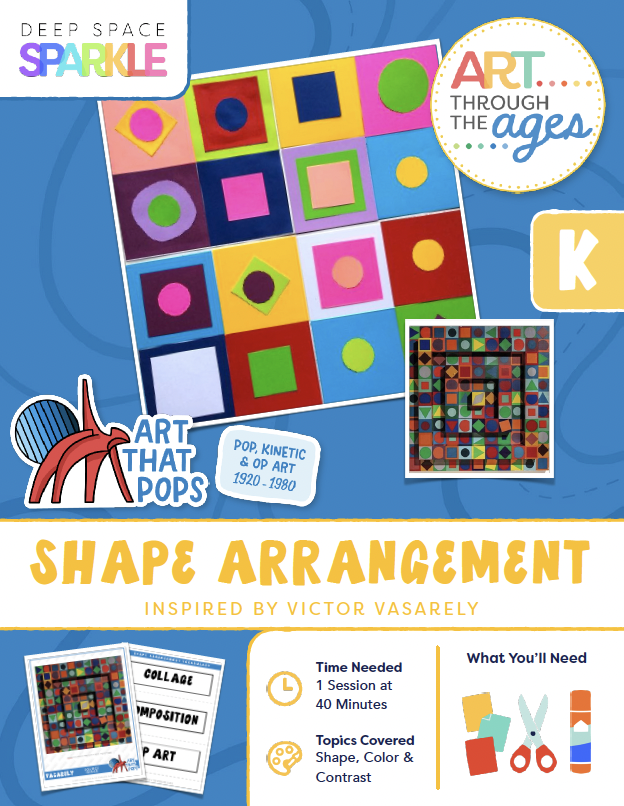
This simple lesson involving basic shapes and bold color is based on Hungarian-French Op artist Victor Vasarely’s Alphabet Plastique, a visual alphabet that he developed featuring several shape and color... Learn More
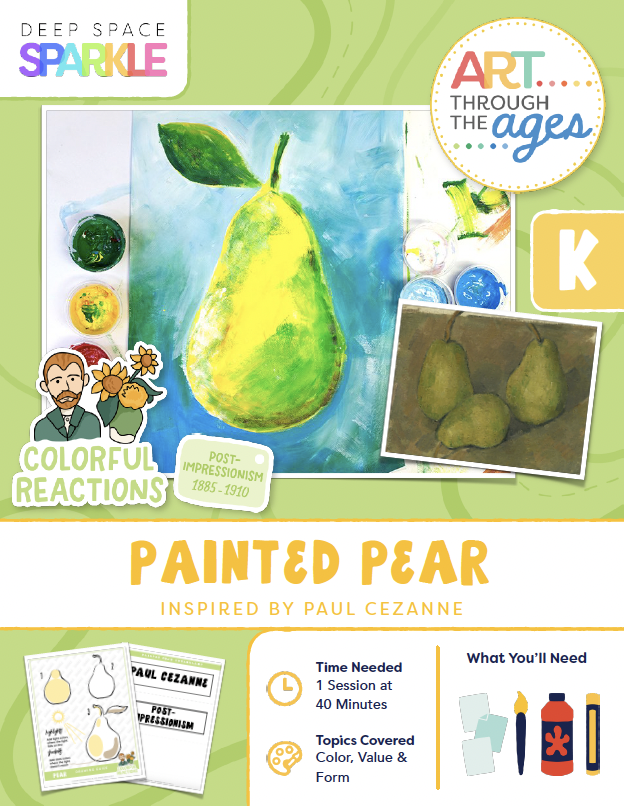
This still life based on French painter Paul Cézanne is easily created by kindergarteners with the use of a paper plate or round template and pre-mixed colors. Exploring Cézanne’s still... Learn More
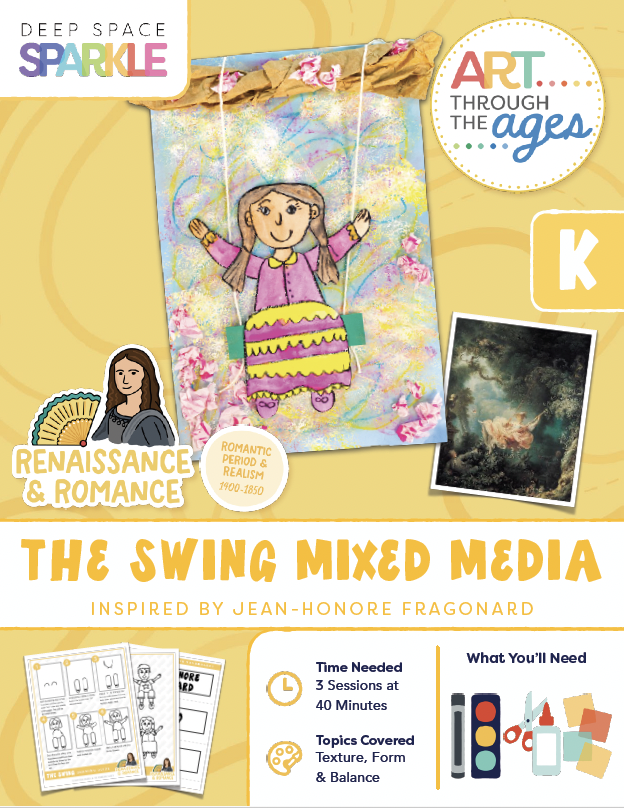
The layered elements and media used in this lesson result in a beautiful finished product. Every child can relate to swinging, and I know a favorite feature of this lesson... Learn More
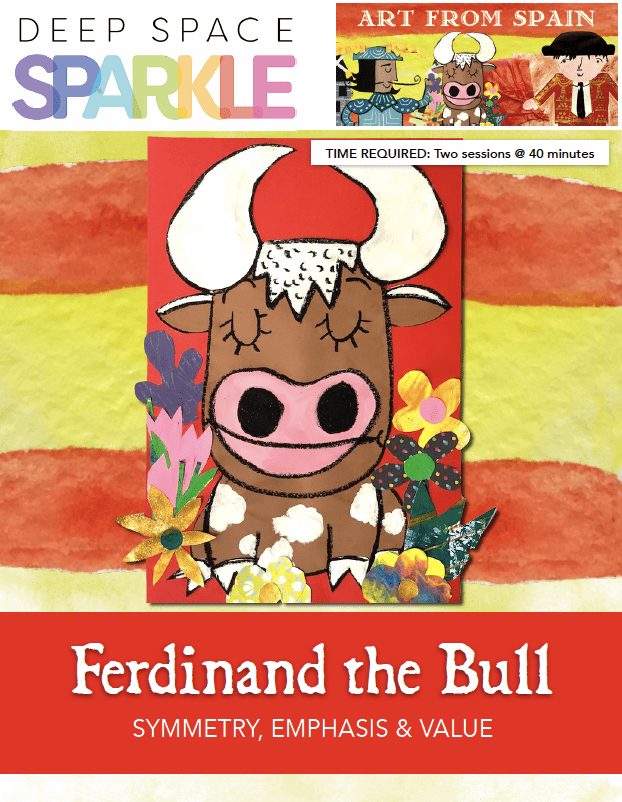
Do you know the sweet story of Ferdinand the Bull? The book Ferdinand* by Munro Leaf and illustrated by Robert Lawson has been on children’s bookshelves for over 80 years.... Learn More
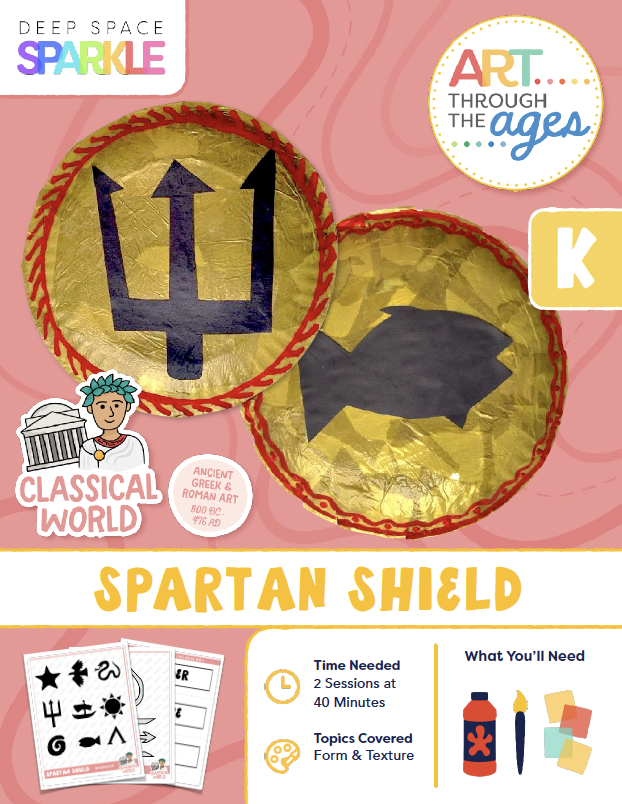
Your students will be thrilled when a simple paper plate turns into a piece of armor with a textured, hammered metallic finish. A simple silhouette of a symbol and a... Learn More
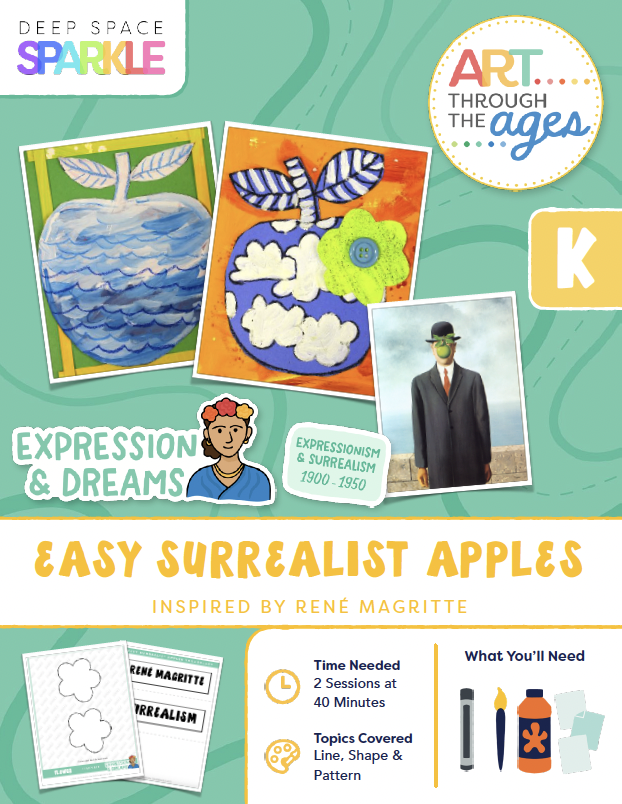
In this lesson, children use painted paper or colored paper for the backdrop to a colorful, surrealist apple. Children learn about René Magritte and why apples appear in many of... Learn More
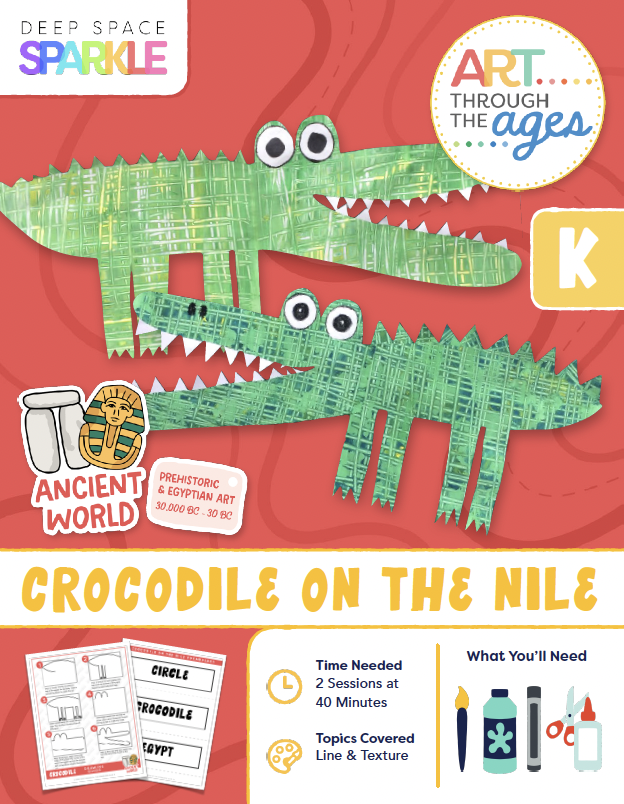
How cute is this painted paper crocodile? Something I love about cutting and gluing projects with Kinders is that their crocodiles will each be terrifically unique and have so much... Learn More
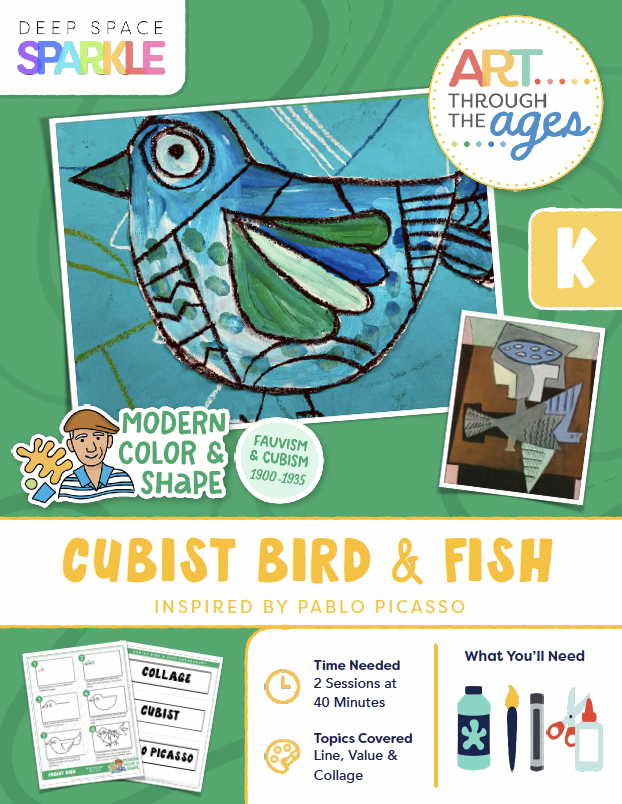
Cubism is a great art movement to discuss as most cubist pieces are hard to identify. This is great for kids as they really need to look closely at a... Learn More
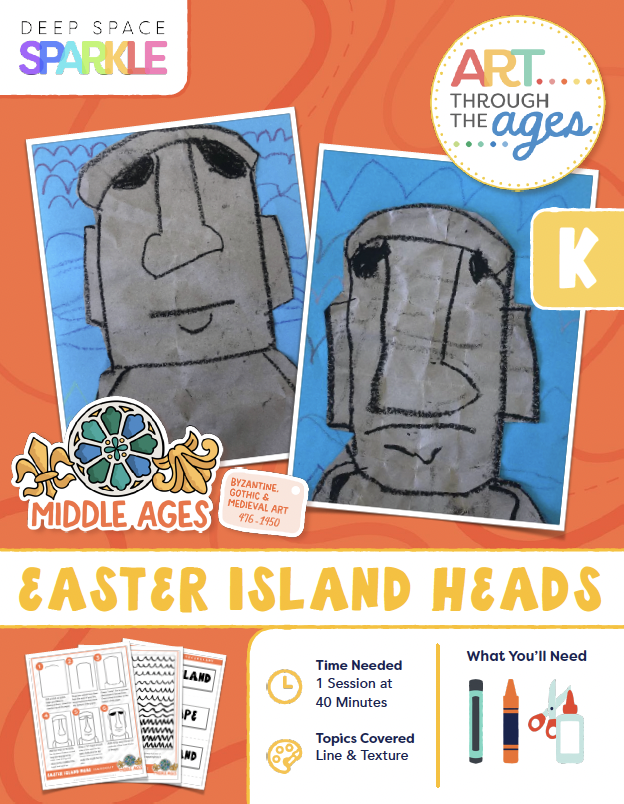
Kindergarteners will begin their study of the Ancient World by drawing a simple Easter Island Head and adding basic lines in the background that look like an abstract landscape (bumpy,... Learn More
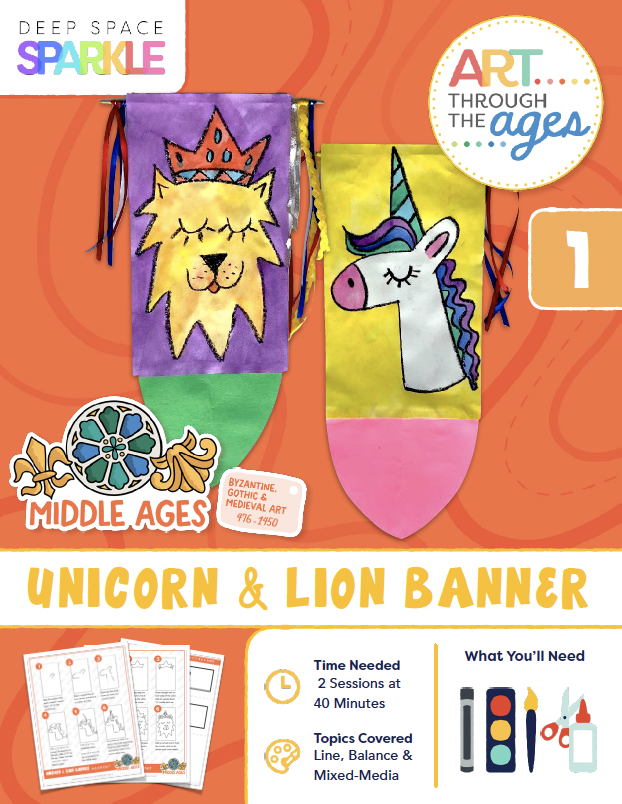
This lesson puts a sparkly spin on the banners flown during Medieval and Renaissance times. Students will enjoy drawing either a whimsical lion or unicorn for their banner. Adding a... Learn More
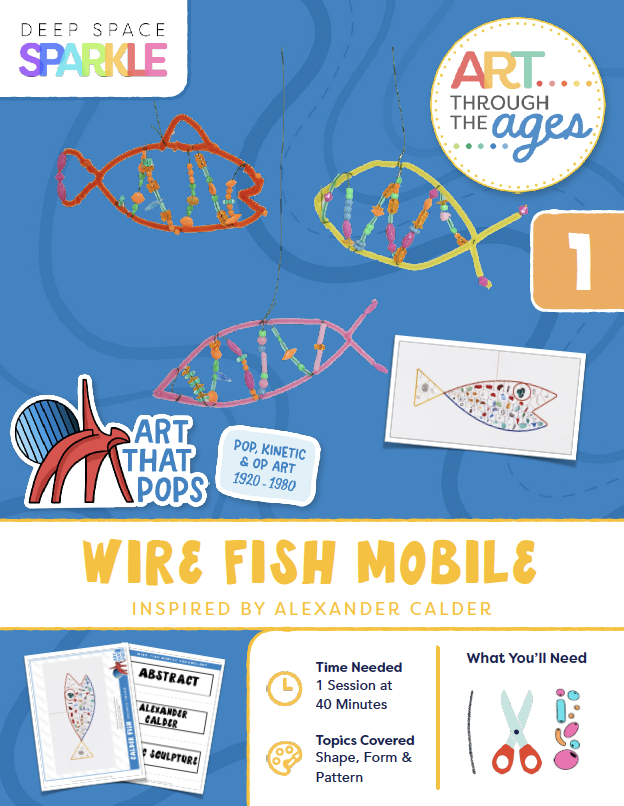
Instead of battling metal clothes hangers to create a mobile, pipe cleaners make quick work in this simple project that yields stunning results. This mobile lesson is perfect for kindergarteners... Learn More
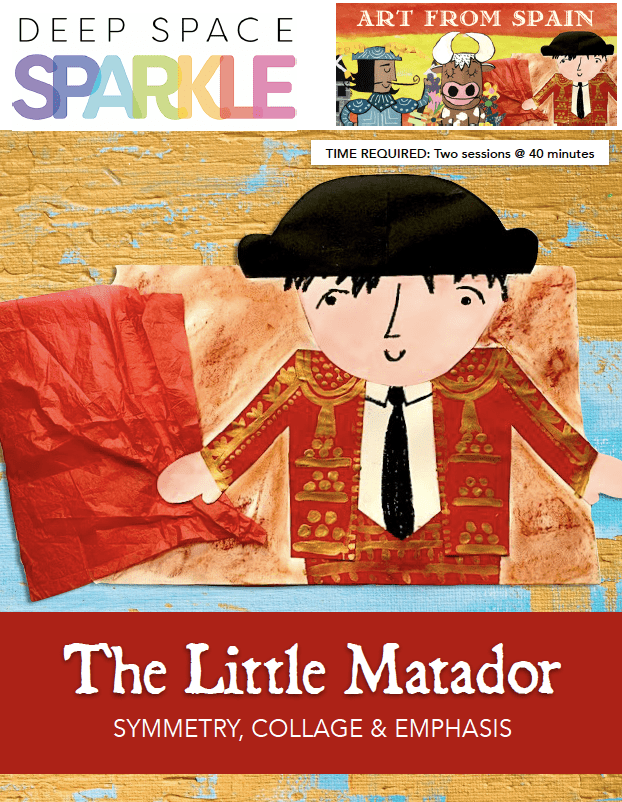
We can’t visit Spain without thinking about the Matadors who fight bulls! This lesson was inspired by two books about young matadors who each fight a bull in a unique... Learn More